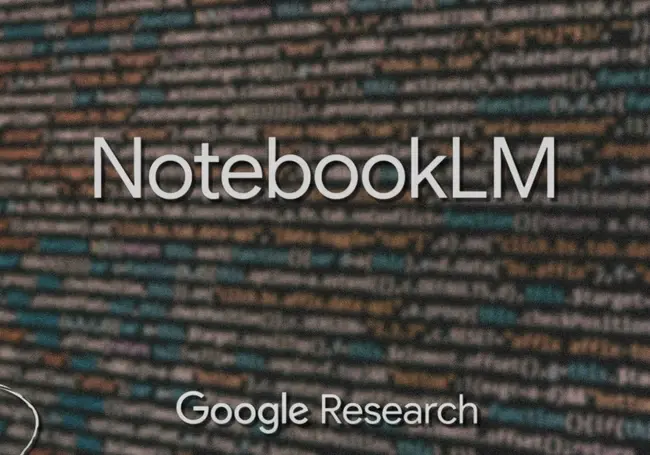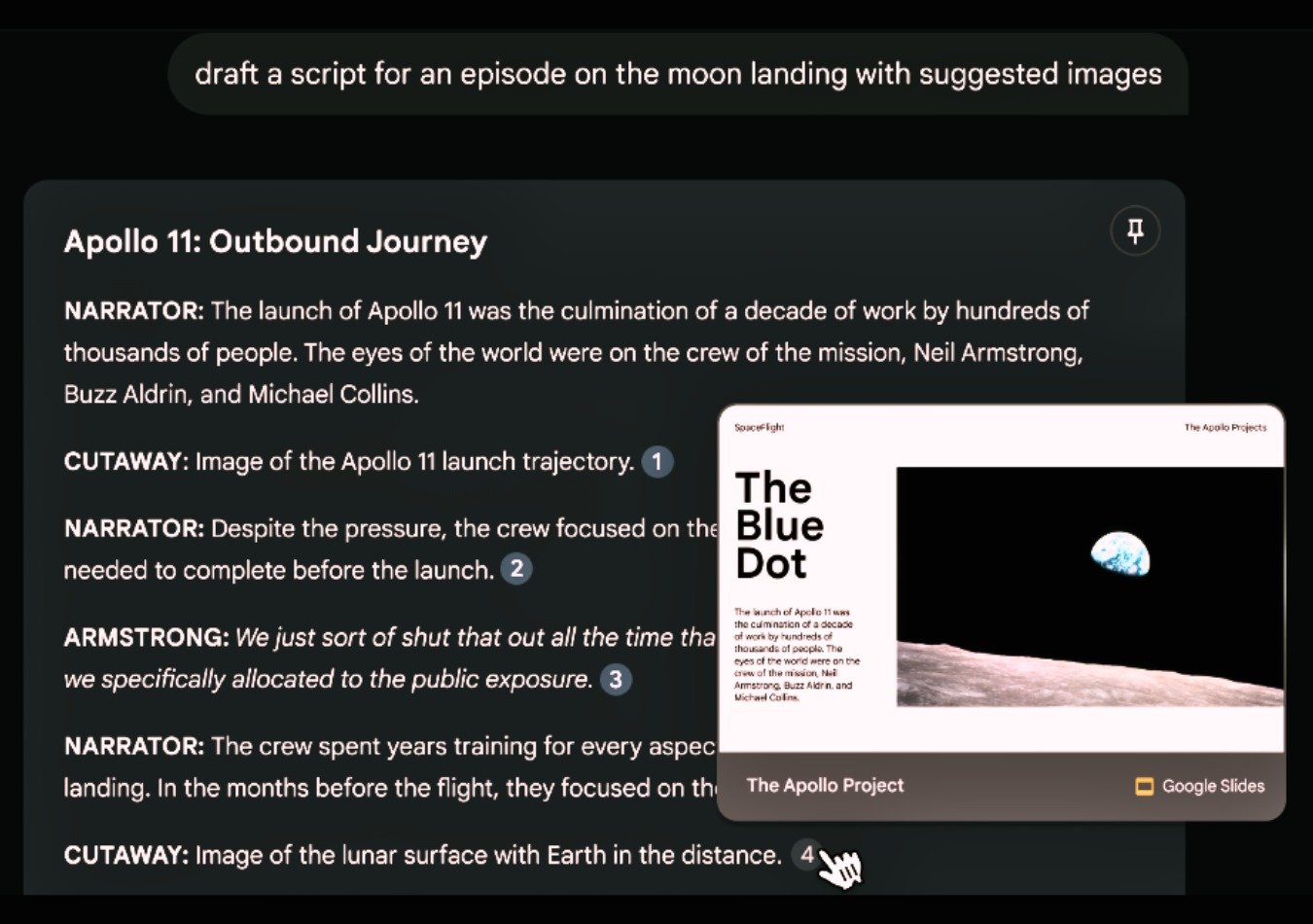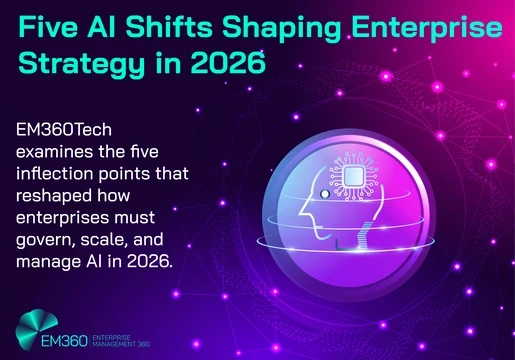With the rapid growth of artificial intelligence (AI), the tech industry is overwhelmed by the demand for newer, upgraded, and faster large language models (LLMs).
The launch of LLaMA, Bloom, and GPT-3.5 has further boosted the rise of LLMs, so much so that other tech giants like Google and Apple have also entered the AI race.
According to Pragma Market Research, the global LLM market size in terms of revenue is projected to reach 259,817.73 million USD by 2030 from 1,590.93 Million USD in 2023, with a CAGR 79.80% during 2024-2030.
One such language model called NotebookLM developed by Google is gaining traction lately. This model recently introduced an audio feature that summarizes content provided by users in both text and audio formats by harnessing the power of the Google Gemini AI tool.
This article tells you everything you need to know about NotebookLM developed by Google, what it is, how to use it, features, benefits, and use case.

What is NotebookLM?
NotebookLM is an AI virtual research assistant application developed by Google aiming to deliver reliable information to its user base. The tool has been built using Gemini1.5. The tech giant first introduced it on July 12, 2023, initiated as part of its AI-first experiments.
Previously referred to as Project Tailwind, Google refurbished the language model with a new name – NotebookLM. It’s an experimental offering from Google Labs that reimagines notetaking software especially if a user designed it from scratch knowing that they would have a powerful language model at its core.
Essentially, the AI tool harnessed the power of AI to assist users in summarizing complex information and taking notes efficiently. This tool provides reliable information and a user-friendly interface for effective note-taking and research.
NotebookLM has been designed to leverage the capabilities of language models paired with users’ existing content. This allows it to provide more relevant and efficient insights, including tasks like summarizing facts from data.
How does NotebookLM work?
NotebookLM combines the capabilities of large language models (LLMs) with user-provided information. It follows a synergistic approach equipping the AI tool with a comprehensive suite of features for productive research and note-taking, making it user-friendly.
Users can easily add their content to the system which could be a research paper, notes, or articles. When the content is uploaded, the tool leverages its advanced language models to process and analyze the information. Users can then interact with NotebookLM to ask questions, request summaries, or explore specific topics. For instance, a researcher might ask NotebookLM to summarize a complex scientific paper, or a student could request a breakdown of key arguments in a historical text.
Unlike traditional AI chatbots, Google NotebookLM allows users to “ground” the language model in notes and sources. Source-grounding effectively creates a personalized AI that’s versed in the information relevant to you. Users can ground NotebookLM in specific Google Docs that they choose.
NotebookLM has the ability to provide concise and informative responses saving users time and effort. It allows them to absorb the information, understand and then apply it. NotebookLM also provides personalized recommendations based on user-provided content further enhancing its value as a research assistant, helping users discover relevant resources and deepen their understanding of the subject matter.
NotebookLM Upgrade
Google has also added new formats recently with the latest one being Audio Overviews. NotebookLM also used the capabilities of Gemini 1.5’s multimodal to power new features such as Google Slides and web URL support, better ways to fact-check, and the ability to instantly create study guides, briefing docs, and more.
Announced last month on September 11, Audio Overview is a new way to transform documents into engaging audio discussions. Google says that with just one click, two AI hosts start up a lively “deep dive” discussion based on users’ sources. They summarize the material, make connections between topics, and banter back and forth. Users can also download the conversation and take it on the go.
NotebookLM also supports images in Slides and Docs, enabling users to ask questions about visual information in photos, charts, graphs, diagrams, and other visual elements. NotebookLM will also return images as citations when they contain relevant information.
At its core, NotebookLM leverages advanced language models to process and understand the information presented to it.
How to use NotebookLM?
To start using NotebookLM, Google account users need to either create a new notebook or choose an existing one. NotebookLM can be used by anyone with a Google account including personal and participating enterprise Google Workspace or Google Workspace for Education users.

After creating a notebook, users can add sources to it, which are the documents or text that NotebookLM will use to answer their questions and complete all user requests. Sources are copies of various files that NotebookLM will use as the basis for answering questions and performing actions within a given notebook. Each notebook functions as a separate project, similar to how folders are used to organize files on a computer.
NotebookLM is not a publicly available standalone application yet, it’s still an experimental tool. Google plans to constantly update the application but for now, it can be integrated into Google Workspace tools and likely accessible through specific features or services within that ecosystem.
To create a new note, the user can deploy multiple steps in NotebookLM such as:
- Save a model response to notes - If you receive a response that you like, click the pushpin in the response box to save the response to Notes. Saved response notes are not editable once created.
- Use existing notes to create a new note - Select notes and choose one of the suggested actions to create a new note based on their content: for example, select all your notes and choose “create study guide”.
- Write a new note - In the upper-right corner of the Notes section, click Add note. You can write or paste text into this note.
Key features
1. Note-taker
NotebookLM is equipped with note-taking abilities allowing users to create notes within the application. These notes can be organized, annotated, or highlighted, providing a comprehensive tool for research and knowledge management, enabling users with the capability to capture their thoughts and insights. This also makes it easy to review and reference information later on.
The note-taking abilities can also be integrated with NotebookLM’s language models. Users can highlight specific passages within their notes, and NotebookLM will provide summaries or explanations of the highlighted content. This functionality is particularly useful for understanding complex concepts or clarifying unfamiliar terms.
2. Audio Overviews
NotebookLM introduced Audio Overviews in September 2024, its latest update to the application which provides users with a more engaging way to review content. Users can generate a brief audio summary of a research paper or article, highlighting the key points and conclusions. This could be particularly useful for those who prefer listening to information or for those who need to quickly grasp the main ideas of a lengthy text.
Audio Overview is still experimental and has some known limitations. For example, for large notebooks, it can take several minutes to generate an Audio Overview. Also, when the AI hosts are explaining your sources today, they only speak English, sometimes introduce inaccuracies, and you can’t interrupt them yet.
3. Google Slides
NotebookLM’s Google Sliders is a powerful presentation tool that provides users with the ability to create visually appealing presentations seamlessly. It offers a variety of characteristics including customizable templates, a variety of slide layouts, and the ability to insert images, videos, and charts. Users can collaborate with others in real-time, making it perfect for team projects.
Google Slides also integrates seamlessly with other Google Workspace tools, such as Google Docs and Google Sheets, allowing users to easily import and export content between different applications.
4. Recommendation System
NotebookLM has a recommendation system that helps users discover relevant resources by analyzing their inputs and interests. Based on users' information, the system recommends articles, papers, or other relevant materials, making it especially useful for researchers exploring new topics or looking to boost their understanding of a certain subject.
The recommendation system is designed to be personalized, taking into account the user's specific interests and preferences. It can also adapt over time as the user interacts with the tool, providing more accurate and relevant recommendations. This helps users to stay up-to-date with the latest developments in their field and discover new and exciting information.
5. Advanced Language Models
NotebookLM is powered by advanced language models that allow it to process and comprehend complex information, making it one of the most critical features. These models are capable of analyzing text, extracting key points, and summarizing complex concepts in a concise and informative manner.
Having been trained on massive datasets of text and code, making them adaptable to learn complex patterns and relationships within language, it allows users to quickly grasp the essential ideas from large amounts of content.
Key benefits
1. Curate and create
NotebookLM’s most powerful workflow is to create and curate which allows users to highlight notes to produce a palette of suggested actions that they can further optimize to transform the information contained within the notes.

Users can combine a group of notes into a single note and they can summarize the contents of the notes, or organize them into thematic categories. Additionally, they can create a study guide to help you review the material and create custom formats just by typing their instructions into the chatbox.
Like most language models, NotebookLM is good at transforming specific information into familiar formats, like blog posts, marketing plans, or email newsletters. If users provide detailed instructions, NotebookLM should be able to get them a working first draft for many other formats as well.
2. Writing
NotebookLM provides comprehensive tools to assist users with writing including the style and substance of the way they write. Users can begin writing in an empty note or optimise the curate-and-create tools to move past the blank-page issue. They can select notes and prompt NotebookLM to say, create an outline or draft an opening paragraph for a newsletter for instance.
Once the user has the text in their written note, they can simply select the note and opt for “critique” and NotebookLM will provide constructive feedback about the argument the user has made. Users can also choose "Suggest related ideas" and NotebookLM will offer a collection of facts or ideas from your sources directly related to what they’ve just written.
3. Integration
NotebookLM is equipped with integration benefits allowing it to seamlessly connect with other Google Workspace tools including Google Docs and Google Sheets. This interoperability allows users to easily import and export content between different applications, simplifying their workflow and enhancing productivity.
For example, researchers can import relevant data from Google Sheets into NotebookLM for analysis and summarization, while students can integrate their notes from NotebookLM into a Google Doc for further improvements. This integration not only saves time and effort but also fosters more cohesive and efficient research.
Use case
Research article
Step 1: Create a new notebook
Step 2: Pasted the link to a research article titled – Combining sound with tongue stimulation for the treatment of tinnitus: a multi-site single-arm controlled pivotal trial published in the journal, Nature Communications.
Result: NotebookLM summarized the research people and also presented an option to gear the Audio Overview.
NotebookLM summary: This research article from Nature Communications presents the findings of a clinical trial (TENT-A3) that evaluated a new bimodal neuromodulation treatment for tinnitus, called Lenire. The trial involved 112 participants who received 6 weeks of sound-only stimulation followed by 6 weeks of combined sound and tongue stimulation. The study found that the combination of sound and tongue stimulation significantly improved tinnitus symptoms in participants with moderate or severe tinnitus compared to sound-only stimulation. Additionally, the treatment showed a high satisfaction rate and an acceptable safety profile, leading to FDA De Novo approval for the Lenire device for tinnitus treatment.
Users can prompt the AI language model for additional information either by using the suggested prompts or by writing their own.







Comments ( 0 )